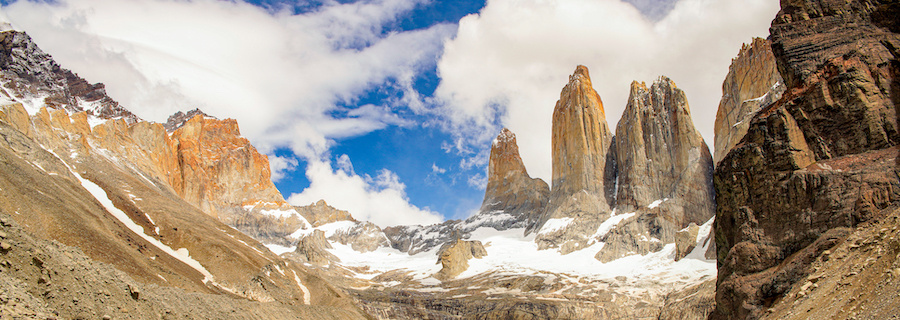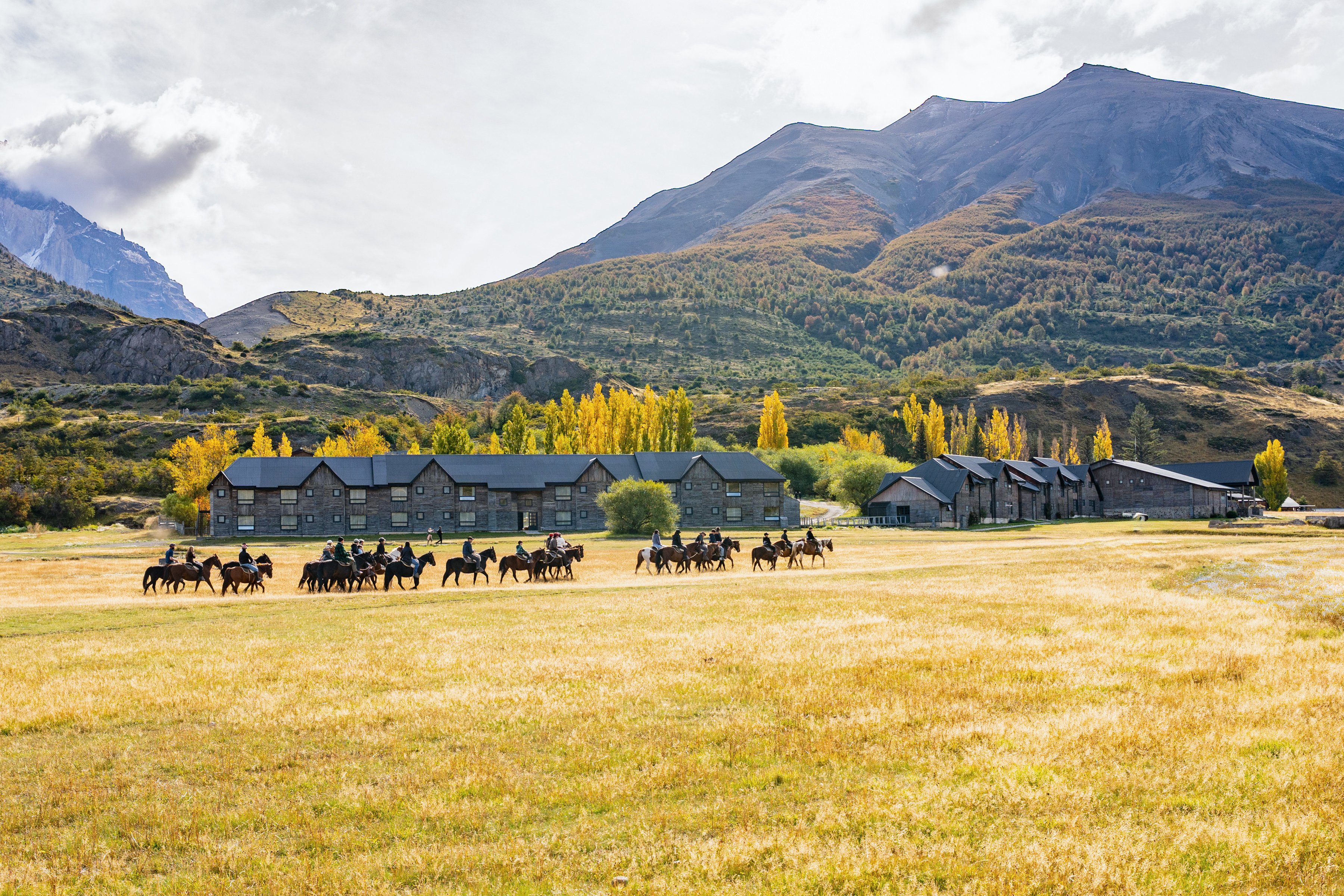5 Things You Didn’t Know About Torres del Paine
The granite towers that give their name to the national park have been the focus of countless stories in Patagonia. Tourists from around the world flock to this corner of the Magallanes Region to witness this geological wonder with their own eyes. However, there are many lesser-known facts about them. Here are some intriguing details you should know before starting your adventure to this famous viewpoint.

How Were the Towers Formed?
The formation of the towers is a subject of curiosity for all who visit. The fact that nature, through various processes, shaped this geological structure invites us to reflect on how extraordinary it is that these colossal formations exist only in this part of the world. During the Cretaceous period, when dinosaurs roamed the Earth, much of what is now Torres del Paine was submerged underwater, allowing layers of rock to accumulate. Over time, these layers were lifted by tectonic activity and compacted, forming granite. This was the first step in the creation of the towers. Later, erosion caused by wind, water, and glaciers during the ice ages sculpted these massive rock formations into the towering structures we see today.

Did You Know that Lake Nordenskjöld and the Torres del Paine Are Connected?
When we arrive at the Base Torres viewpoint, many focus on the magnificent granite columns, not noticing the details at the base of the towers. At the foot of these giants lies a small lagoon, and a river forms at the right end, which is part of the well-known Ascencio River. This river runs along the entire Base Torres trail and flows into Lake Nordenskjöld. The river is fed by the melting snow from the mountain ranges surrounding the viewpoint. So, the next time you visit Lake Nordenskjöld, remember that a little piece of the granite towers can be seen in its turquoise waters.

What Are the Names of Each Part of the Base Torres Viewpoint?
While people commonly refer to this location simply as Base Torres, there are several sections with specific names. Each granite column also has its own name: from left to right, we have the South Tower (2,850 meters), also known as D'Agostini, the Central Tower (2,800 meters), and finally, the North Tower (2,600 meters), also called Monzino. To the left of the towers lies the Valley of Silence, which allows you to get closer to the base of the granite columns. This area requires a special permit from CONAF and a certified guide. To the right of the towers is Cerro Peineta, often referred to as the "fourth tower." The view concludes with the Condor's Nest, where these magnificent birds rest, and where you may even have the chance to photograph one soaring above the viewpoint.

Who Were the First Adventurers to Make History at Base Torres?
Santiago Zamora is considered one of the most important pioneers in Patagonia's recent history, having extensively explored the region. During his lifetime, he formed a close relationship with the Aónikenk people, which made many of his explorations possible. His skills would be invaluable when, in 1879, he teamed up with Scottish writer, war correspondent, and Patagonia’s first tourist, Florence Dixie. Together, they explored the region, and thanks to them, we have the first known drawings of the area. Dixie is among the first recorded people to have discovered the granite towers, which she named "Cleopatra’s Needles" in her books.
In 1959, Guillermo Cifuentes led the first recorded ascent of the Torres del Paine, marking an important milestone in the region’s mountaineering history. Although there had been previous explorations, it wasn’t until his expedition that the summit of the granite columns was reached.
.jpeg?width=900&height=358&name=Base%20Torres%20(cuerpo).jpeg)
Base Torres: A Destination for Those Who Don’t Know Limits
The hike to the Base Torres viewpoint is challenging, and many take on this adventure as a way to push their personal limits and achieve a monumental goal. You’ll encounter people of all ages, nationalities, and physical conditions, all with the same objective: to reach this iconic natural viewpoint in one of the most remote corners of the world.
In 2022, an elderly couple, Segundo Castro (72) and Cleyra Sáez (63), completed the trek to the viewpoint after a long hike. Along the way, they were encouraged by others, which filled them with emotion. Castro commented, "I wanted to cry, the emotion was overwhelming."
2017 also marked a significant moment for Base Torres. Álvaro Silberstein, who became a tetraplegic after a car accident at age 18, fulfilled his dream of exploring Torres del Paine at the age of 31. He became the first person in a wheelchair to complete the iconic W Circuit, proving that with determination, any challenge can be conquered.
Do you want to join the ranks of these incredible adventurers? For more information on our guided tours, visit here.




.jpg)